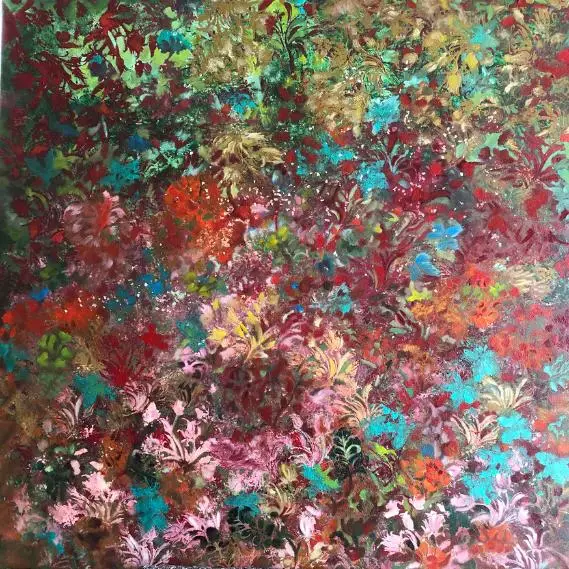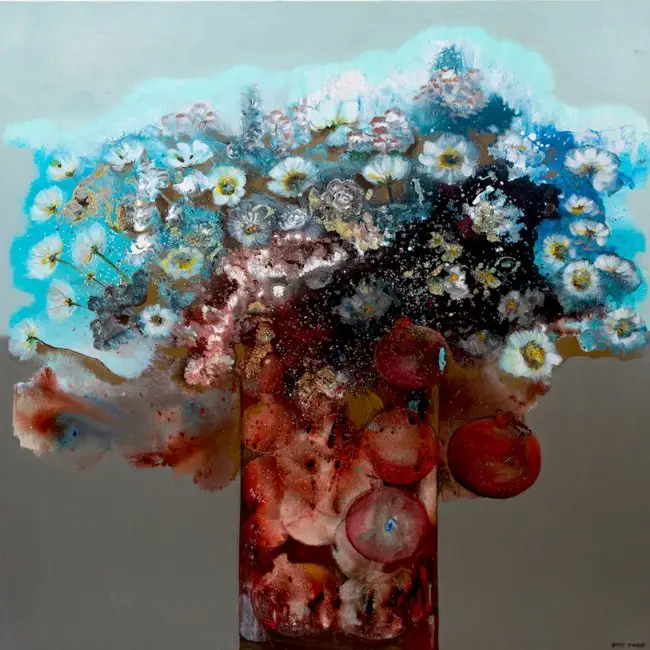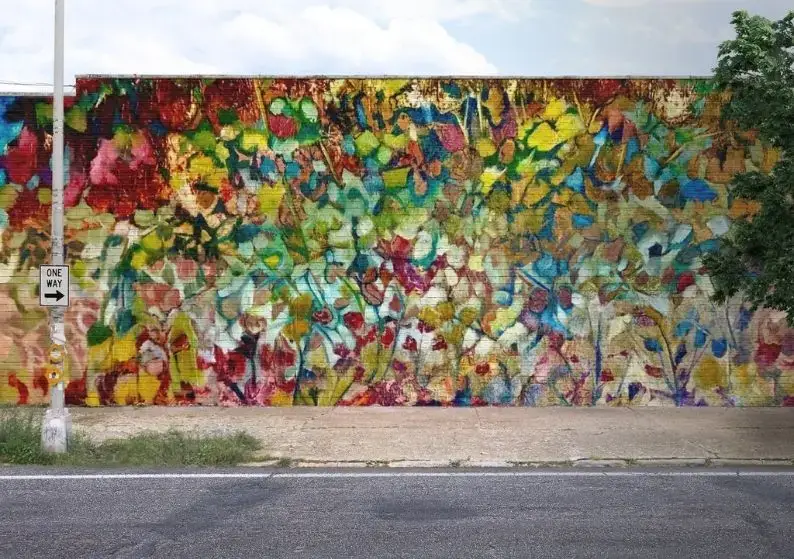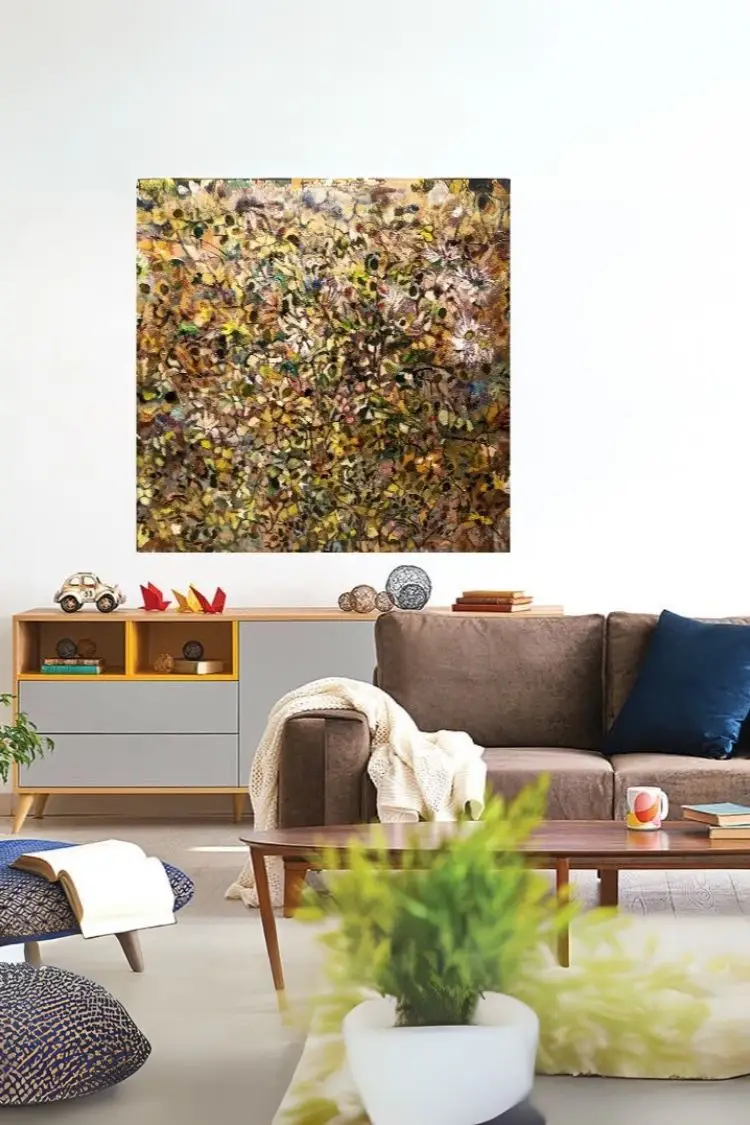
Abstract and figurative art are two emotional languages of expression — one translates how something feels, the other how it appears. Together, they help us see both the visible and invisible dimensions of emotion.
Abstract and figurative art express emotion differently — one speaks through form and feeling, the other through image and story — yet both reveal our shared humanity.
As an artist, I’ve never seen abstraction and figuration as opposites — they are two ways of telling the same story. One speaks in rhythm and emotion; the other in symbols and likeness.
When I first began painting, I felt torn between the two. Figurative work allowed me to capture gesture and presence, while abstraction freed me from form altogether. Over time, I realised they weren’t competing — they were in conversation.
Each painting, whether abstract or figurative, begins with emotion. The only difference is how that emotion finds shape.
As I shared in understanding abstract art, abstraction translates feeling into colour and rhythm rather than literal imagery. Figurative art, on the other hand, gives that same emotion a face or form. Both invite empathy — they simply arrive there differently.
Figurative art speaks in the language of the familiar. It draws from the world we know — the curve of a shoulder, the reflection of light on skin, the posture of stillness or movement.
Our brains are wired to recognise human figures instantly. This instinct reaches deep into our evolutionary past; recognising faces and bodies was once essential to survival. That’s why figurative work often feels intimate — it mirrors us back to ourselves.
When we see a painted figure, we connect through empathy. A bowed head might suggest sorrow; an open gesture, grace. Even without a story, the posture speaks.
But figurative art isn’t only about representation — it’s about emotion through structure. The space between figures, the contrast of light and dark, and the choice of palette all evoke psychological states. A subtle expression or compositional tension can move us just as powerfully as abstraction.

Abstract art, in contrast, speaks in emotional shorthand. It bypasses recognition and moves straight to resonance.
Where figurative art tells you what to see, abstraction asks you how you feel. It’s the difference between hearing lyrics and listening to melody.
In my reflections on the psychology of colour and form, colour activates emotion directly — before the mind creates meaning. This immediacy is what gives abstract work its timeless appeal: it’s understood beyond culture or language.
Abstraction removes the filter of likeness. You don’t need to identify a subject to feel connected; you simply respond — physically, emotionally, intuitively.
For me, that’s where art becomes pure conversation. Each mark holds intention, but meaning remains fluid, waiting for the viewer to bring their own story.
If you’d like to experience how I translate emotion into visual rhythm, you can see this process in my current abstract collection, where colour, energy, and space meet in intuitive balance.
The space between abstraction and figuration is fertile ground for expression. Many of my works exist right there — in the tension between what can be recognised and what can only be felt.
Sometimes, a figure dissolves into light or pattern; sometimes, a brushstroke meant for emotion becomes a gesture that suggests movement or anatomy. That intersection — the meeting of form and formlessness — is where emotion feels most alive.
Artists have explored this boundary for centuries. From Turner’s atmospheric seascapes to Rothko’s colour fields, from Picasso’s fractured portraits to contemporary expressionism, the conversation between representation and abstraction continues to evolve.
It’s a reminder that art is not a fixed language but a spectrum of perception.
In modern interiors, this balance can also transform a space. Pairing a lyrical abstract piece beside a figurative work adds rhythm and contrast — a visual duet of emotion and form. I’ll explore this further in my upcoming piece on modern abstract art in London homes, where placement and pairing bring harmony to contemporary living spaces.
Figurative art invites recognition first, then reflection. Abstract art invites sensation first, then meaning.
Both trigger emotion, but they do so through different pathways in the brain. Figurative imagery engages the visual and linguistic centres, while abstraction activates the limbic system — the part connected to emotion, memory, and imagination.
That’s why viewing abstract work can feel meditative, while figurative work feels narrative. One expands, the other grounds. One asks you to feel; the other asks you to understand. Together, they complete each other.
In my mindfulness writings on art and presence, I share how slowing down with either type of painting — really seeing — can shift perception. Whether you’re gazing at a figure or a field of colour, the act of being present is what deepens connection.
Though their languages differ, both abstract and figurative art aim for the same purpose — to make you feel something real.
A figure might evoke empathy; a field of blue might evoke peace. Both lead you inward. That’s the heart of art — communication without words.
In a sense, figurative art speaks to our outer world — the world of faces, gestures, and light. Abstract art speaks to our inner world — the rhythms we can’t describe but always recognise. Together, they tell the whole story of being human.
When I paint, I often shift between these modes. Sometimes emotion demands structure; other times, it needs freedom. My brush doesn’t decide which until the painting begins to breathe on its own.
If you’d like to understand how colour choices heighten this emotional bridge, my thoughts on the beauty of colour and emotion, where I share how palettes evoke feeling across both styles.

For collectors, understanding the difference between abstract and figurative art isn’t about preference—it’s about emotion and atmosphere.
A figurative piece can bring narrative depth to a room; an abstract piece can open it, creating flow and spaciousness.
Many of my clients find that combining both creates harmony—an interplay between story and silence. A figurative piece grounds a space emotionally; an abstract work adds energy or calm, depending on its rhythm and palette.
I often help collectors explore this mix when designing cohesive interiors. The same guidance I share in decorating with wall art applies: balance tone, texture, and mood. Let your emotional response lead more than design rules.
And if you’re beginning your journey as a collector, my guide on investing in abstract art offers practical insight into how emotional resonance and long-term value align.
Ultimately, abstraction and figuration aren’t two opposing styles — they’re two halves of one conversation.
When I paint, I’m not choosing sides; I’m listening. Sometimes a composition whispers through shape and gesture, and other times, through energy and colour. Each piece is an attempt to speak the language emotion demands in that moment.
As viewers, our task is simply to listen back. Let the image or rhythm reach you without judgment. Whether the form is recognisable or not, ask yourself: What does it make me feel?
That question is where meaning begins.
Art doesn’t ask you to choose between emotion and form — it invites you to experience both. Shop Now to discover works that express rhythm, balance, and emotion through colour.
Or, if you’d like to create something personal that bridges abstraction and form, let’s collaborate on a custom commission designed for your home.
Each piece begins with dialogue — and becomes part of yours.
Abstract art focuses on form, colour, and emotion rather than realistic representation, while figurative art depicts recognisable subjects. Both express human feeling—just through different visual languages.
Yes. Many contemporary works blend the two, using hints of form within abstraction. These hybrid styles create emotional tension and depth.
It depends on personality and perception. Figurative art appeals to those drawn to story and symbol, while abstract art resonates with those who connect through mood and energy.
Choose pieces that share a colour palette or emotional tone. The contrast between image and abstraction often creates beautiful balance. For interior guidance, see my notes on modern abstract art in London homes.
Both hold value when the work carries authenticity and voice. If you’re exploring art collecting, see my guide on investing in abstract art for practical insight.





